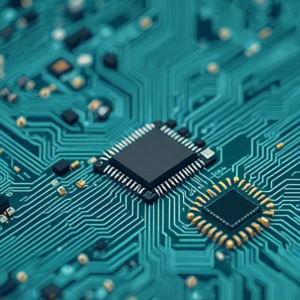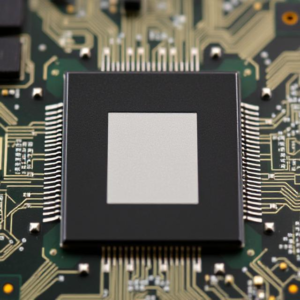What is Embedded Firmware Development?
Embedded firmware development refers to the process of writing software (known as “firmware”) that is specifically designed to run on embedded systems. An embedded system is a computer that’s part of a larger system or device, designed to perform a specific task. These systems are often found in gadgets like washing machines, microwaves, cars, medical devices, or even your smartphone.
Firmware is software that is permanently programmed into hardware (like a microcontroller or microprocessor) and directly controls the hardware. Unlike regular software, firmware usually interacts directly with hardware components to perform specific functions without the need for an operating system.

What is Firmware?
Firmware is a type of software that is installed directly into hardware and typically doesn’t change frequently. It’s stored in non-volatile memory (like flash memory), so it stays even if the power is turned off.
Example: Think of firmware as the brain of a device, but unlike your brain that can change its thoughts, firmware doesn’t change unless you update it. For example, when you update your smartphone’s operating system, part of that update might be firmware for certain components, like the camera or Bluetooth.
What is Embedded Firmware Development?
Embedded firmware development is the process of designing and coding the software that operates on these embedded systems. The firmware controls and manages the interactions between the hardware and higher-level software in the device. It’s essential for the operation of things like your microwave’s timer, your car’s airbag system, or the heart rate monitor on your fitness tracker.
Steps Involved in Embedded Firmware Development
- Understanding the Hardware:
- First, you need to understand the specific hardware components of the device you’re working with (like microcontrollers, sensors, memory, etc.).
- Example: If you’re working on a fitness tracker, you need to understand how the microcontroller communicates with sensors like the heart rate monitor.
- Writing the Firmware Code:
- The next step is to write the code (firmware) that will control how the device behaves.
- Firmware is usually written in low-level programming languages like C or C++ because these languages give you more control over the hardware.
- Example: For a thermostat, the firmware might include code to turn on the heating when the temperature falls below a certain point.
- Testing the Firmware:
- After writing the code, you need to test it to make sure it behaves correctly and doesn’t cause any issues in the hardware.
- Example: Testing could involve checking if the microwave’s timer displays the correct time and counts down properly.
- Debugging:
- Debugging is the process of fixing errors in the firmware. This can be tricky, as you’re working closely with the hardware.
- Tools like debuggers and emulators help you step through your code, inspect values, and understand why the firmware isn’t behaving as expected.
- Optimizing:
- Since embedded systems often have limited memory and processing power, optimization is crucial. This might involve making your code run faster or using less memory.
- Example: If you’re designing a smart thermostat, you might optimize the firmware to make sure it uses minimal energy to run.
- Deployment:
- Once everything works as expected, the firmware is installed onto the embedded system. This is often done via programming tools that load the code into the memory of the microcontroller.
- Maintenance and Updates:
- Firmware can be updated later to fix bugs, add new features, or improve performance. Updates are usually done via software tools that reflash or reprogram the embedded system.
Key Concepts in Embedded Firmware Development
- Microcontrollers:
- A microcontroller is the “brain” of an embedded system. It’s a small computer on a single chip that executes the firmware to perform tasks. You write firmware that controls how the microcontroller interacts with other components like sensors, motors, or displays.
- Common microcontroller families include ARM, AVR, and PIC.
- Real-Time Operation:
- Many embedded systems require real-time operation, meaning the system must respond to events within a specific time frame. For instance, a car’s airbag system needs to react in milliseconds if a collision happens.
- Real-time operating systems (RTOS) may be used in complex embedded systems, though simpler systems may not need one.
- Interrupts:
- An interrupt is a mechanism that temporarily halts the firmware to respond to an urgent task (like pressing a button on your microwave). After handling the interrupt, the firmware continues where it left off.
- Hardware-Software Interaction:
- Embedded firmware often communicates directly with hardware using GPIO (General Purpose Input/Output) pins, serial communication, or other interfaces to control LEDs, motors, sensors, and more.
- Memory Management:
- Embedded systems typically have very limited memory, so managing how memory is used is crucial. This includes ensuring that variables are allocated efficiently and that the system doesn’t run out of memory during operation.
Tools Used in Embedded Firmware Development
- Integrated Development Environments (IDEs):
- IDEs like Keil, Eclipse, or Arduino IDE help you write, compile, and upload firmware to your embedded system. These tools make development easier by providing code editors, compilers, and debugging tools.
- Compilers:
- Compilers convert your source code into machine code that the microcontroller can execute. GCC (GNU Compiler Collection) is a popular option for embedded development.
- Debuggers:
- Debugging tools like JTAG or SWD (Serial Wire Debug) allow you to connect to your embedded system and examine its behavior, step through your code, and fix any issues.
- Emulators:
- Emulators mimic the hardware in software, allowing you to test and debug your firmware without needing the physical hardware.
Challenges in Embedded Firmware Development
- Limited Resources:
- Embedded systems often have limited memory and processing power. This means developers must be efficient with their code and design to ensure everything works smoothly.
- Hardware and Software Interaction:
- Firmware is directly interacting with hardware, which can make debugging and testing tricky. You must understand the specific behavior of the hardware to write effective code.
- Real-Time Constraints:
- Many embedded systems need to respond to inputs in real time, which places time constraints on the firmware. Meeting these deadlines while keeping the system stable is a challenge.
- Power Consumption:
- Many embedded devices run on batteries (like IoT sensors), so power efficiency is important. Writing firmware that consumes minimal power is crucial for extending battery life.
Applications of Embedded Firmware Development
- Consumer Electronics:
- Devices like smartphones, smart watches, and home appliances all rely on embedded firmware to perform tasks efficiently.
- Automobiles:
- Modern cars are full of embedded systems, including engine control units (ECUs), safety systems (airbags, ABS), and infotainment systems.
- Medical Devices:
- Devices like pacemakers, glucose monitors, and infusion pumps rely on embedded firmware to ensure they work correctly and safely.
- Industrial Automation:
- Embedded systems are used in PLC controllers, robotics, and sensors for factory automation and process control.
- Internet of Things (IoT):
- IoT devices, like smart thermostats, fitness trackers, and home security cameras, all run on embedded firmware to interact with sensors, communicate with other devices, and process data.
Summary
Embedded firmware development is the process of writing software that runs on embedded systems, controlling hardware to perform specific tasks. It involves understanding the hardware, writing efficient code (typically in C or C++), testing, and debugging. Embedded systems are found in everything from household appliances to medical devices, and the firmware controls how these systems behave. It’s a crucial part of many modern technologies, requiring skills in both software development and hardware understanding.











